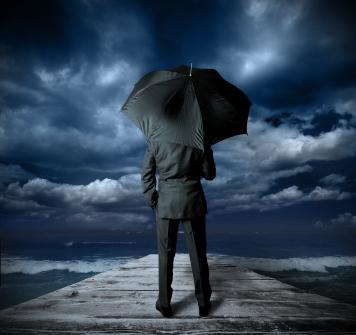 Although U.S. insurers had enough funds to handle the impact of Hurricane Sandy the increasing number and intensity of severe weather events is still a cause for concern for panelists at a Property/Casualty Insurance Joint Industry Forum.
Although U.S. insurers had enough funds to handle the impact of Hurricane Sandy the increasing number and intensity of severe weather events is still a cause for concern for panelists at a Property/Casualty Insurance Joint Industry Forum.
Insurance claims from catastrophes initially fell from $32.8 billion in the first nine months of 2011 to $16.2 billion in 2012. This allowed insurers to build a record-high $583.5 billion policyholder surplus—the insurance industry’s cumulative assets, minus its liabilities—after the first nine months of 2012.
Then Sandy came along and caused anywhere from $20 billion to $25 billion in insured auto, home and business insurance claims payouts after it made landfall near Atlantic City, New Jersey, on Oct. 29, completely changing the way insurers will look back at 2012.
“The industry overall responds very well and very promptly,” when natural disasters strike, Texas Insurance Commissioner Eleanor Kitzman said in a statement.
After Hurricane Ike hit Texas in September 2008, about 90 percent of the state’s Ike claims were closed by year-end 2008, Kitzman said.
Ike generated $12.5 billion in insured claims payouts, and was followed three years later by Hurricane Irene ($4.3 billion). Months before Irene, there were spring 2011’s deadly and costly tornadoes in states such as Alabama and Missouri.
“It [Sandy] probably also highlights the whole issue that the industry is trying to deal with, which is ‘what is the new normal?’ as far as level of catastrophe losses,” Vincent J. Dowling, managing partner, Dowling & Partners, said. “The last few decades, the losses relative to premium continue to increase, and we have not had ‘The Big One’ yet.”
“Over the last 10 years, ended 2012, the homeowners insurance business nationally made an annual after-tax profit of about four percent,” said Brian Sullivan, editor and publisher of Auto Insurance Report and Property Insurance Report. “Now that doesn’t cover the cost of capital, but when you look at the business, and you think of just how disgusting the past 10 years has been in terms of performance, that’s not really a disaster.” The silver lining for the industry, Sullivan said, is “that information and data about the nature of risk, and the nature of claims, is exploding.”
“For the most part, we’re not seeing a lot of rating movement because most companies have managed this [Sandy’s aftermath] fairly well, and been able to diversify themselves enough that it hasn’t had a major impact,” said Matthew Mosher, senior vice president and chief rating officer, A.M. Best Company, when asked about the industry’s post-Sandy financial condition. “There are some [insurers] that probably had outsized losses, in terms of what they would have liked. And I would expect that individual companies may make some changes in terms of what their portfolio looks like but nothing that we look at in terms of financial strength, risk, or anything of that nature.”
“We saw claims coming in very quickly, far greater than any other previous catastrophe that we had dealt with,” said Jeffrey Bowman, president and CEO of Crawford & Company, when discussing the industry’s Sandy response. Crawford assigned to its clients over 600 adjusters in 16 U.S. states to administer Sandy claims.
Dr. David Sampson, president and CEO of the Property Casualty Insurers Association of America, moderated the five-member Experts Panel: A View from the Outside Looking In.
The session’s moderator mentioned that, amid all of the industry’s focus on Sandy and its repercussions, policymakers continued to weigh the enactment of new laws and regulations which would likely make it harder for insurers to operate.
“The industry has proven strong and resilient, with continuing near record capital, and surplus and almost no global failures,” Sampson said. “Study after study has concluded that insurance activities are not systemically risky.”












